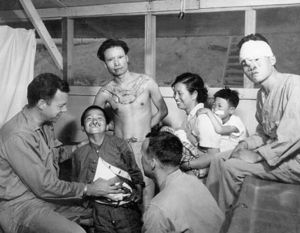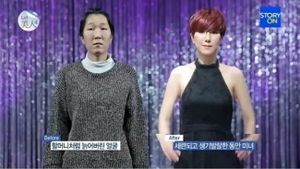Medicalization of Beauty in South Korea
Introduction
As one of the most medically advanced countries, South Korea became the plastic surgery capital and had the most prevalent plastic surgery consumers from all over the world. Even since South Korea was introduced to plastic surgery during the Korean War in the mid-1940, plastic surgery was not only socially and legally legitimized as a necessary medical practice in South Korea, but also was industrialized to the level in which plastic surgery became the major source of national income. The popularization of cosmetic enhancement through plastic surgery has changed the perspectives of South Korean on physical appearances. South Koreans views looking beautiful by the definition of beauty defined by the society is one of the necessary aspects of life; hence, many are very open to getting plastic surgery to look beautiful. Today, South Koreans perceive plastic surgery as one of the necessary ordinary commodities. Medicalization of beauty, therefore, can be found in South Korea.
History of Plastic Surgery in South Korea
The First Appearance of Cosmetic Plastic Surgery in the 1960's and 1970's
In the 1960's and 1970's, South Korea was still in the process of recovery from the Korean War. South Korea began to reconstruct its national economy through the implementation of strong policies. During the reconstruction of the nation, the legal and social legitimization of plastic surgery, along with other legalization and recognition of medial performances, in Korea also took place. During the Korean War in the early 1950's, the American military occupation took place in South Korea, and an American military surgeon, Dr. David Ralph Millard, performed reconstructive plastic surgeries for wounded soldiers with deformities. [1] Millard also had performed cosmetic surgery on Korean female patients, who were usually involved in sex trades, to look more appealing to Americans who were their major customers, and he saw his medical performances as help to those women who were required to look beautiful. [2] In 1961, Dr. Jae-Duck Yu, a Korean U.S. certified plastic surgeon, began to practice and teach the specialty at the Medical College of Yonsei University, which had the first department of plastic surgery in South Korea. In 1969, the Korean Medical Association admitted the Korean Society of Plastic and Reconstructive Surgeons, which was established by Dr. Yu in 1966. [3] In 1974, plastic surgery for cosmetic purposes as medical practice was finally approved by the Supreme Court in South Korea. The legitimization of plastic surgery was based on the pathological reason. Patients of plastic surgery were viewed as those who suffer from psychological problems about their physical appearance; for example, female patients were even portrayed as "ill-women". [4] This is the framework for the medicalization of beauty because South Koreans began to see a desire to look beautiful was one of the medical issues needed to be handled by professionals.
Plastic Surgery in the 1980's and 1990's
From the 1980's to 1990's, South Korea had gone through enormous economic, cultural, and political growth. South Koreans, given economic development and political stability finally begins to enter consumerism. During this period, plastic surgery along with other beauty treatments, as emerging commodities, was popularized and became part of the middle-class culture. [5] Additionally, South Koreans began to appreciate cultural products such as popular songs and were more exposed to western cultures, such as Hollywood movies and western popular songs. South Korean culture began to build the definition of beauty. Many South Koreans followed the look of western and Korean celebrities. They were willing to look like them. Most of these celebrities have western faces: they have big eyes, a sharp nose, and a V-shaped face line. Popular culture changed South Koreans' perspective on the standard of beauty. South Koreans began to define a beautiful woman as a woman with western face features. Plastic surgery allowed many young women at this time to have such features and attracted many women to have medical performances done. In the mid-1990s, young female celebrities were open about their personal lives, including their plastic surgery stories, and they familiarized the idea of plastic surgery. [6]
Plastic Surgery in the early 2000's
During the early the 2000's, the industrialization of plastic surgery took place. In 1997, economic hardship returned to South Korea, and South Korea had to receive financial assistance from the International Monetary Fund. In 2001, South Korea's economy recovered but was still unstable. Hence, companies and markets were deregulated. Soon, plastic surgery along with other cosmetic treatments and product lines for enhancement of physical appearances became one of the sources for market competitions among both individuals and plastic surgeons. The expansion of the industry increased the demand for plastic surgery and competition among plastic surgeons harder. The product of competition was innovation and improvement of plastic surgery procedure. As a result, South Korea becomes the capital of plastic surgery. Korean plastic surgery businesses went beyond the national border and attracted consumers from other Asian countries including China, Japan, Hong Kong, Singapore, Taiwan, Thailand, Vietnam, Indonesia, and the Philippines, due to the export of Korean popular cultural products, such as Korean dramas and Korean popular music, to those Asian countries. [7]
Plastic Surgery Now and Medicalization of Beauty in South Korea
Plastic surgery became very common in South Korea that at least 50 percent of Korean women in their twenties had had plastic surgery. [8] Regardless of race, gender, and age, many South Koreans get plastic surgery to enhance their physical appearances, including facial and bodily features and skin. Young people regardless of gender usually get double eyelid surgery, sharp nose, v-line (double-jaw) surgery, and injections including Botox and filler. The old people, also regardless of gender, usually go for minor touch-ups, instead of major ones like the ones young people get, such as injections, which are typically temporary. Today, the medicalization of beauty in South Korea can be seen everywhere since many individuals perceive plastic surgery as a necessity good as in they should get plastic if they are not beautiful by the definition of beauty defined by the society.
Media's Implication on Plastic Surgery as Investment
In 2010, the first season of the reality show, called "Let Me In", aired on the cable television in South Korea. The title "Let Me In" has two meanings: one is that “let me become a Me In”. (“Me In” means a beautiful woman in Korean), and the other one is that “let me in”. The show was about transforming women, who were socially excluded from the society due to their financial hardships or personal relationship issues, through plastic surgery to give them better lives. The plastic surgery performances were meant to give them feel beautiful and confident. Those women appearing on the show are those women who are not defined as “beautiful” by Korean culture come and share their stories about how they are socially excluded from society not only due to the reasons mentioned previously but also due to the lack of confidence about their physical appearances. At the end of the show, they receive plastic surgery for free and share the stories about how plastic surgery made their lives much better. This show was criticized for its condemnation of physical appearance of ordinary women and for pointing out that all the social problems are due to their physical appearance. It focused on the result of plastic surgery. This TV show, despite its criticism, aired five more seasons and imprinted the idea that plastic surgery is one of the investments to enhance the quality of life. Young generations even get plastic surgery to look appealing for their job interviews.
Notes
- ↑ Leem, So Yeon. (2015). The dubious enhancement: Making South Korea a plastic surgery nation. East Asian Science, Technology and Society, 10(1), 51.
- ↑ Thompson, L. (2012). Plastic surgery. Santa Barbara, CA: Greenwood
- ↑ Leem, So Yeon. (2015). The dubious enhancement: Making South Korea a plastic surgery nation. East Asian Science, Technology and Society, 10(1), 51.
- ↑ “Cosmentic Surgery Guided by the Field of Plastic Surgery.” Dona-a Ilbo, 3 April 1969
- ↑ DiMoia, John. (2013). Reconstructing bodies: Biomedicine, health, and nation-building in South Korea since 1945. Standford University Press.
- ↑ “Why Do I Have to Hide My First Kiss and Plastic Surgery?” Chosun Ilbo, 29 April 1997
- ↑ Chua, Beng Huat. & Iwabuchi. Koichi. (2008). East Asian Pop Culture: Analyzing the Korean Wave. Hong Kong University Press.
- ↑ Chung, Jae-Chorl. (2007). A critical study on Korean women’s body discourse. Journal of Communication and Science, 7(), 292-318.


